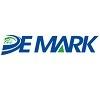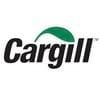Characterization of PRRS viremia and shedding in naïve replacement gilts inoculated with PRRS RFLP 1-7-4
Published: November 6, 2025
Source : W. Burton 1*, J. Pittman 1 / 1 Smithfield Hog Production Division - North Region, Waverly, VA, United States.
Summary
Keywords: Intentional Exposure, PRRS, viremia, shedding, Replacement Gilts
Introduction:
A porcine reproductive and respiratory syndrome (PRRS) restriction fragment length polymorphism pattern of 1-7-4 emerged in North Carolina in 2014. The highly virulent nature of the virus was evidenced by a wide-ranging loss of production in breeding herds regardless of prior PRRS immune status. Mitigation of risks associated with introduction of PRRS naïve replacement gilts into a breeding herd has been attempted with vaccination or intentional exposure of wild type isolates. The purpose of this study was to characterize the viremia and shedding in naïve replacement gilts given PRRS RFLP 1-7-4 live virus inoculation (LVI) only and those given commercial modified-live PRRS vaccine (MLV) four weeks prior to LVI.
Materials and Methods:
Two gilt development units (GDUs) located off-site from the two destination sow farms were selected and assigned treatment groups. Each GDU held 450 naïve gilts ranging from 12-22 weeks of age. GDU 1 received LVI only upon arrival and GDU 2 received MLV upon arrival and LVI four weeks later. The PRRS 1-7-4 virus used for inoculation was collected from acutely infected wean pigs from the corresponding GDU’s destination sow farm. The LVI products were formulated to an infectious dose of 103 virus particles/mL and each gilt was given 1 mL IM. The gilts receiving MLV were given 2 mL IM of a commercial modified-live PRRS vaccine. At each GDU, blood (viremia and seroconversion) was collected from 45 tagged gilts and 10- 12 oral fluids (shedding) were collected weekly to bi-weekly until all sample types were PCR negative. Serum and oral fluids were tested by PRRS qPCR and ELISA. PRRS sequence analysis was done one week post-inoculations to confirm development of viremia to MLV or LVI respectively.
Results:
PRRS PCR and sequencing for all sample types at one week and ELISA at three weeks post-inoculation were all positive confirming infection and seroconversion to the inoculum given at arrival. PCR cycle time (Ct) values of serum and oral fluid samples one week post-LVI were 23.6 and 26.7 for GDU 1 and 30.4 and 31.2 for GDU 2. All samples types were negative at 12 weeks post-LVI for GDUs 1 and 2. Total mortality was 29 (6.4%) and 7 (1.5%) for GDU 1 and GDU 2 respectively.
Conclusion:
PRRS 1-7-4 LVI time to negative viremia and shedding was 12 weeks under the conditions of this study, regardless of prior immune status. Use of MLV four weeks prior to LVI may reduce viremia and shedding levels as suggested by higher Ct values one week post-LVI. Use of MLV four weeks prior to LVI may reduce mortality associated with PRRS 1-7-4 infection.
Disclosure of Interest: None Declared.
Published in the proceedings of the International Pig Veterinary Society Congress – IPVS2016. For information on the event, past and future editions, check out https://www.theipvs.com/future-congresses/.
Content from the event:
Related topics:
Recommend
Comment
Share

Would you like to discuss another topic? Create a new post to engage with experts in the community.









